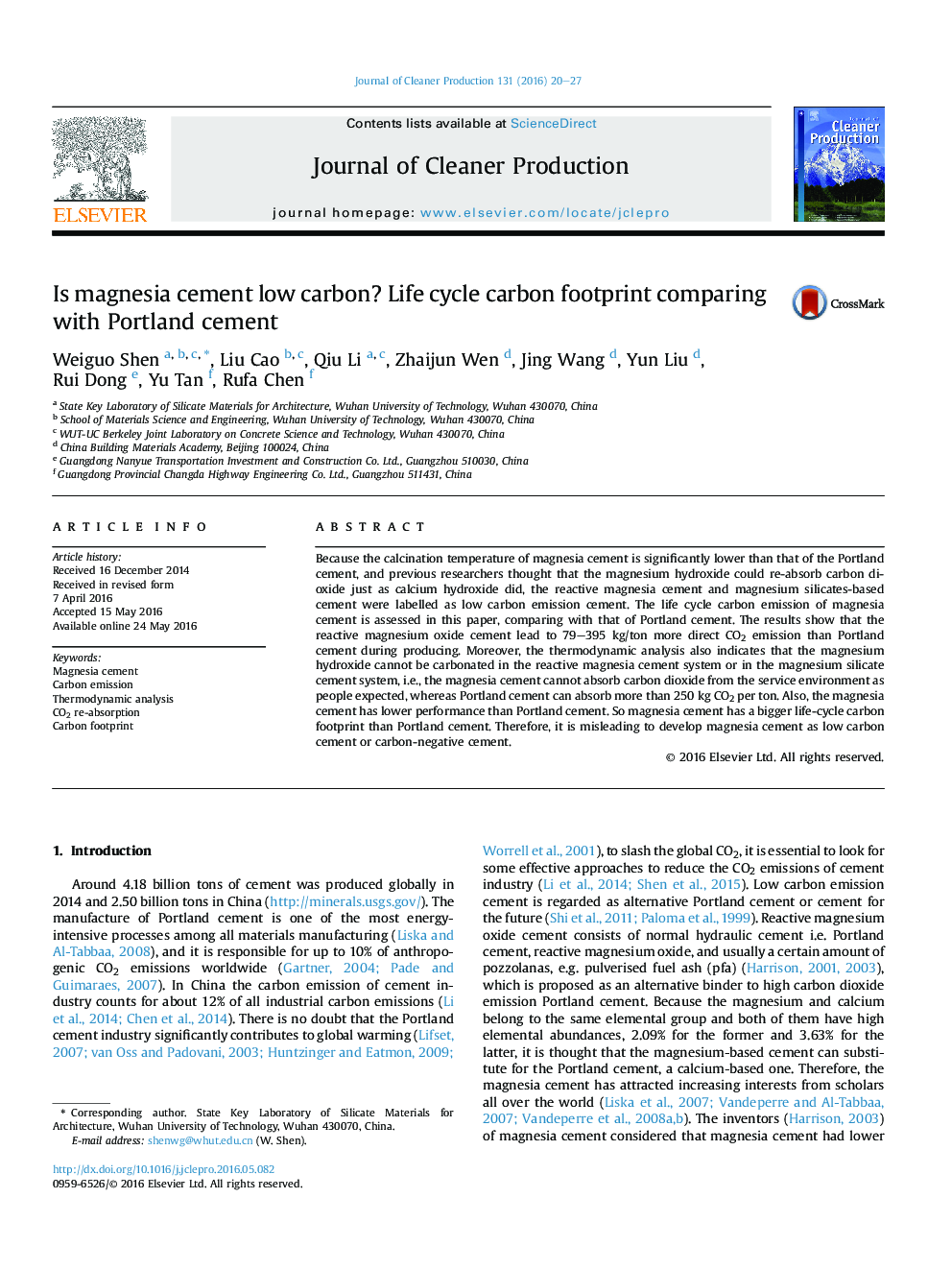| Article ID | Journal | Published Year | Pages | File Type |
|---|---|---|---|---|
| 8101548 | Journal of Cleaner Production | 2016 | 8 Pages |
Abstract
Because the calcination temperature of magnesia cement is significantly lower than that of the Portland cement, and previous researchers thought that the magnesium hydroxide could re-absorb carbon dioxide just as calcium hydroxide did, the reactive magnesia cement and magnesium silicates-based cement were labelled as low carbon emission cement. The life cycle carbon emission of magnesia cement is assessed in this paper, comparing with that of Portland cement. The results show that the reactive magnesium oxide cement lead to 79-395Â kg/ton more direct CO2 emission than Portland cement during producing. Moreover, the thermodynamic analysis also indicates that the magnesium hydroxide cannot be carbonated in the reactive magnesia cement system or in the magnesium silicate cement system, i.e., the magnesia cement cannot absorb carbon dioxide from the service environment as people expected, whereas Portland cement can absorb more than 250Â kg CO2 per ton. Also, the magnesia cement has lower performance than Portland cement. So magnesia cement has a bigger life-cycle carbon footprint than Portland cement. Therefore, it is misleading to develop magnesia cement as low carbon cement or carbon-negative cement.
Related Topics
Physical Sciences and Engineering
Energy
Renewable Energy, Sustainability and the Environment
Authors
Weiguo Shen, Liu Cao, Qiu Li, Zhaijun Wen, Jing Wang, Yun Liu, Rui Dong, Yu Tan, Rufa Chen,
